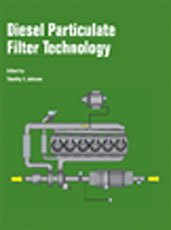Technical Paper
Next Generation Aluminum Titanate Filter for Light Duty Diesel Applications
2011-04-12
2011-01-0816
With the introduction of the current EU5 standards the diesel particulate filter has become a key element in the aftertreatment of diesel passenger cars. The upcoming future emission standards target primarily a further reduction in NOx emission as well as reduced fleet average CO₂ emissions. Although the particulate filter has no direct influence on the reduction of these species, the needs of future aftertreatment systems impose additional requirements on advanced filter technologies. In this paper we are introducing two new filter products based on a new low porosity aluminum titanate family that complement the current DuraTrap® AT filter products. The new products offer the potential for an increased soot mass limit or a significant reduction in pressure drop. The enhanced performance of the new filter products is discussed and demonstrated in a large number of experimental data obtained in engine bench tests.

